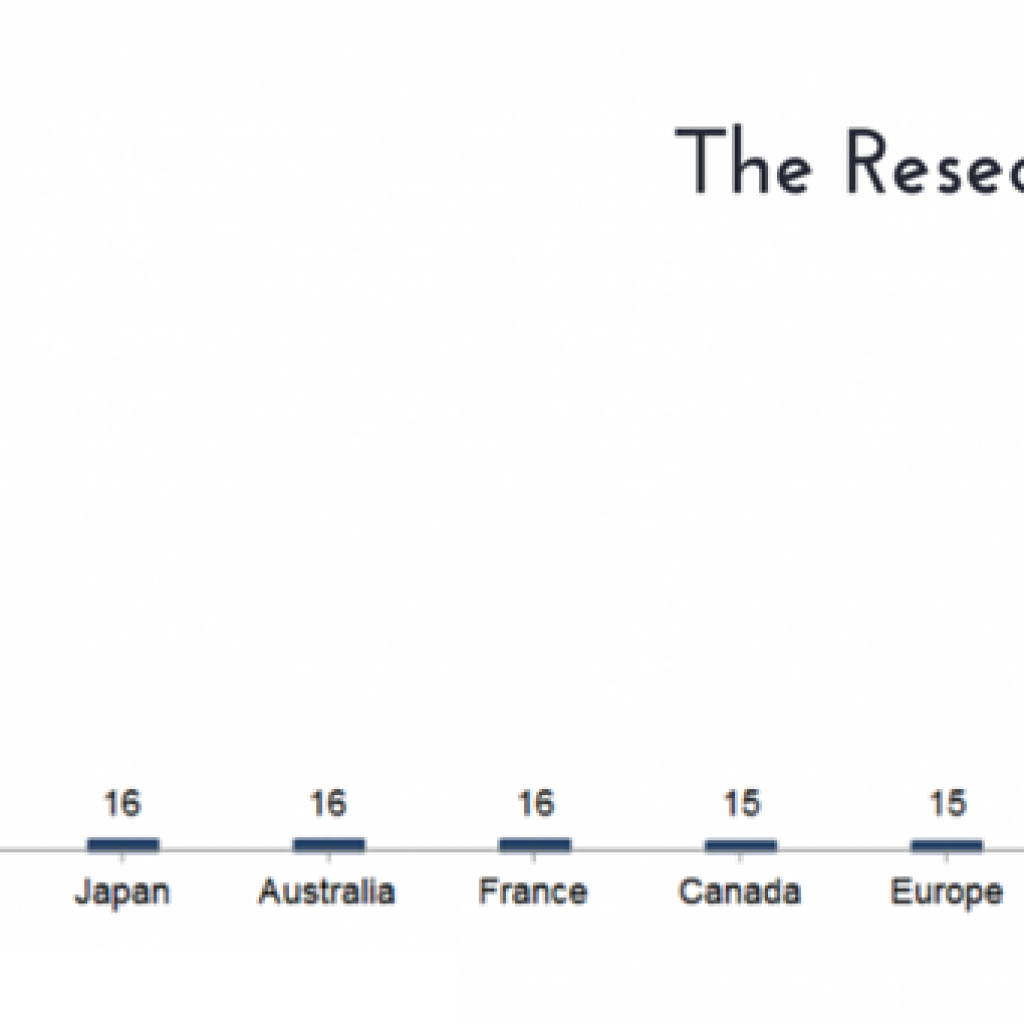Preamble
In this study, we aimed to identify the top players in the 5G technology (NOT 5G SEP, NOT Core SEP) and countries which are flag-bearers for innovating in this technology. The intent was to make people aware of the progress made in the industry so far.
It was an automated analysis and no manual filtering of the patents was done. For the purpose of data collection, we collated a list of top 5G enabling technologies (such as New Radio, SDN, NFV, Beamforming, etc.), relevant key terms, and broad classes related to telecom concepts. We formulated custom search logics based on a combination of identified key terms, concepts, and classes. We ran these search logics on Derwent Innovation (patent database) which yielded a patent set of around 60K unique patent families which would broadly consist of all 5G related patents.
Thus, the numbers mentioned in this article represent only 5G patents (NOT 5G SEP, NOT Core SEP). There is no direct correlation with standard-essential patents which are declared by the companies to ETSI or other standard bodies.
Further, we have recently published a report on 5G essential patents where we performed a manual analysis on the 5G SEPs declared to ETSI by March 2019. In this study, we did a thorough analysis of each of the declared 5G patents (having granted and alive status as of December 31, 2019) to confirm its essentiality with 5G specifications (more than 500 specs were considered). The declared patents which we found to be overlapping with 5G specs were considered as core SEPs. We have shared our initial findings in the report. Read it from here –
Are you a telecommunications company that believes in protecting your innovations? If yes, did you realize your patent portfolio might include patents that could be essential to the technology or the domain on the whole? Would you like to uncover the gold trenched in the haystack? If you are intrigued, join me as I walk you through the world of SEPs and how you can uncover the same in your portfolio.
But first, a little bit of background
You see, the world and its people nowadays are governed by their smartphones or computers that operate over various networks. These devices can interact with their fellow mates too, no matter where they are located. All thanks to technology.
A naive person might ask – How are these devices able to understand each other’s language (i.e. signals) if they are present in different countries?
To have such a world of interoperability, these devices typically need to comply with the telecommunication standards, i.e., protocols by which devices communicate with each other and other technologies to achieve their functionality. Further, there are hundreds or even thousands of patents that claim to cover parts of these technologies, which are combined to form the standards and make these devices work. The patents covering these technologies are known as Standard Essential Patents (SEPs).
SEPs are good. But how valuable are they to any telecom company? Let’s find out.
The Beauty of SEPs – Essentially Gold Trenched in Haystack
Imagine your company owns a set of SEPs. What can be done with them? Let’s explore this possibility.
You can, for starters, claim royalties from all the companies/manufacturers that manufacture their standard-compliant device by using the piece of cake (technological idea) that you have invented and protected. To just give you a 20,000 feet view of the goldmine on which you could be sitting, as per 2016 reports, the royalty income for 2G, 3G, and 4G standards was approximately €18 billion per year.
The SEP market as you see is enormous, and there are certainly some big guns that rule over it and tend to shape the telecommunication industry as per their inventions.
A major portion of worldwide SEPs (around 70%) is declared for large standards projects such as GSM, UMTS, LTE and 5G, set at the largest standard-setting organization, better known as European Telecommunications Standards Institute (ETSI).
So you now know the value of SEPs, and you do realize you might have a few in your portfolio too. This brings us to our next question –
What are the major hurdles for companies to identify these gems?
TBH, there is no hesitation to patent owners for declaring the essential patents to the standard bodies like ETSI. However, there is no indicator for the patent owners to find out whether they have been able to uncover all the essential patents to be declared or there are still some hidden gems in their portfolio.
Fret not, to solve this very problem, we tried to list a few indicators which can help the companies know where they stand.
How companies can overcome this hurdle?
We extracted some set of parameters/indicators based on ETSI 5G declarations made till March 2019. We have used a common factor (H04 class – broadly covers telecom patents) to assess the percentage of 5G declared Patents within each company’s portfolio. If you have been working in the telecommunications domain for long, it can give you an idea of where you stand.
Indicator 1 – Average % share of 5G SEPs in the company’s portfolio (Tech-Driving Companies)
Table 1 depicts the estimated number of patents (H04 class on telecommunication) in a company’s portfolio and the number of declared SEPs (according to the latest data on ETSI) of the top 12 SEP declaring companies. We have tried to estimate the % share of the SEPs in the portfolio of these domain pioneer companies.
| S. NO. | COMPANY | TOTAL PATENT PORTFOLIO SIZE (COMMUNICATION-RELATED ONLY SINCE Jan 01, 2000) | NUMBER OF 5G DECLARED SEPS | % SHARE OF 5G SEPS IN THE COMPANY’S PORTFOLIO |
| 1. | Huawei | 68867 | 2386 | 3.46% |
| 2. | Samsung | 76949 | 1353 | 1.75% |
| 3. | LG Electronics | 62803 | 1388 | 2.21% |
| 4. | Nokia (incl. Alcatel-Lucent) | 41528 | 1031 | 2.48% |
| 5. | Ericsson | 33671 | 1350 | 4.01% |
| 6. | Qualcomm | 41515 | 1042 | 2.50% |
| 7. | Total | 325333 | 8550 | 2.63% |
From the above table, it can be seen that the average % share of SEPs in a company’s portfolio is around 2.63 %.
Indicator 2 – Average % of Declared SEPs families’ w.r.t submitted Change Request (CRs)
The companies that are involved in Standard Development whenever come up with an idea, they usually first opt for securing their idea by filing a patent on the same. Next, they propose their idea in the standard meetings so that they include their idea in standard to essentially make their patent as SEPs. For this, they submit Change Requests to introduce any new feature in the existing standard. Therefore, Declared SEPs and the Number of CRs that a company had submitted usually have a strong correlation. Thus, it can be used as an indicator to know where the company stands & how much potential (i.e. SEPs) they have.
Again, we have used the ETSI 5G Declared SEPs (source – Iplytics) and tried to correlate with CRs that the company had submitted for 5G specs (extracted from the 3GPP website).
| S.NO. | COMPANY | CRs SUBMITTED FOR 5G SPECS | NUMBER OF SEPS FAMILIES (PRIORITY DATE. 2012 YEAR ONWARDS | % SHARE |
| 1. | Huawei | 18642 | 2134 | 11.45% |
| 2. | Samsung | 4020 | 642 | 15.97% |
| 3. | LG Electronics | 1933 | 791 | 40.92% |
| 4. | Nokia (incl. Alcatel-Lucent) | 13728 | 504 | 3.67% |
| 5. | Ericsson | 18549 | 1010 | 5.44% |
| 6. | Qualcomm | 6435 | 634 | 9.85% |
| 7. | Overall | 63307 | 5715 | 9.02 % |
Note: A list of 5G specs has been extracted from 3GPP Portal and is used to filter CRs relevant to 5G.
From the above table, the Average SEPs/CR ratio comes out be 9.02 %. What does it indicate?
- There are high chances that companies below this average have a lot of gems (SEPs) hidden within their portfolio.
- On the other side, having a very high SEPs/CR ratio doesn’t mean you are doing good. For example, LG seems to have a very high ratio, and there might be a possibility that they have over declared their patents to ETSI. Thus, they need to do a stringent check on the patents being declared to ETSI.
What action pointers can be inferred from the above data for telecom companies?
For companies having % share above the average % score as listed in the above tables –
- These companies may still have some patents that are yet to be analyzed and declared, so the first plan could be to boil the ocean of their patent portfolio again to find more SEPs.
- These companies are in the top league of the SEP declaration process and therefore, it can tempt other companies to buy their important assets.
- To continue being in the front pack, these companies need to focus on the other domains where their patents can be declared.
- The R&D team of the company must strive to work in developing technologies to be the front runner in the upcoming time.
- If a company has a large SEP family/CR ratio, then it indicates a significant contribution of the company in specifications. On the other hand, there might be a case that the company is over declaring their patents, and it, therefore, becomes important for them to get a relevancy check on them.
- Many of the concepts of 5G have been derived from root standards such as 2G, 3G, LTE, Wi-Max, etc. So, it’s very necessary to examine SEPs for these older standards to find out if they could be declared again to newer standards or vice versa. For example – SEPs for 2G, 3G, LTE, Wi-Max standard might be SEPs to 5G as well.
- The standards are developed regularly, so it’s very important to regularly scrutinize the patents against new features/concepts that are being introduced in standards. E.g. for 3GPP there are certain technologies such as V2X, Unlicensed spectrum, etc. for which specifications are yet to be frozen. So, it very important for companies to track standard progress and timely declare SEPs pertinent to these features.
- We have observed that 20-30% of patents fail to qualify as SEPs because during prosecution Applicants/Attorney had added extra limitations to get the patent granted. However, due to only these extra limitations, a patent fails to qualify as SEP. These companies need to track the prosecution w.r.t standard or they can also opt for filling continuations with claims which could qualify as SEPs.
- We have noticed that many of the inventions, which the participants from these tech-driving companies disclose in the standard meetings, might go unnoticed. Hence, again it is very important to track down such beneficial inventions so that they can be proposed again in the meetings to introduce in the standards.
For companies having % share below the average % score as listed in the above tables –
- It should serve as a wake-up call for their R&D team.
- The meat of the patent portfolio is not properly fleshed out and a stringent check is required.
- The patent selling and patent filing of the company are lacking w.r.t to its competitors in the SEP market.
- For the companies providing telecom services to the world, it may be a good opportunity for them to start considering the SEP market as one of their priority. As these companies are already the pioneers when it comes to the service providing aspect and with the case where their patents are declared essential, then it may help them to get a step ahead of their rival companies.
- For companies actively participating in the 3GPP meetings and still failing to surpass the average level is a concern. The data would indicate that the active contribution of the company is not going in hand with the declared SEPs.
- If a company has a low SEP family/CR ratio, then it might be the case that the company’s contribution to proposing a new concept or developing specifications is quite low.
- Moreover, the pointers 6-9 mentioned above are equally applicable to these companies as well. These can significantly boost their SEPs ratio.
Does it impact you?
I am sure that you must be aware of the worth of the SEPs. They are like golden hens that make top telecom giants earn billions via licensing – Nokia and Qualcomm are some pretty big names who play this game. In 2018 alone, Qualcomm earned ~5.2 B via its SEP licensing (Source). Not to mention, there are a lot of companies, who submit their SEPs to pools like Via or Sisvel – where the customers are already lined up and the royalty rate is high e.g. Sisvel’s LTE compliant rate per product is EURO 0.66 or USD 0.73 (Source).
There can be numerous reasons for a company to find itself on the tail of this SEP dragon that it aspires to ride with a better grip. Want to know more? Click here to read the next article in the series.
Authored by: Aman Kumar and Shivam Kansra, Search Team.










